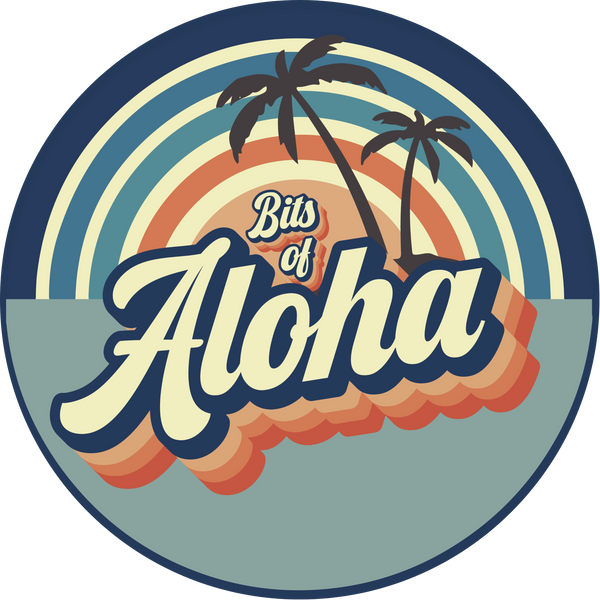
Haleʻiwa History: From Sugar Mills to Surf Town Charm
Share
The History of Haleʻiwa Town: From Sugar Mills to Surf Mecca
Tucked along Oʻahu’s storied North Shore, Haleʻiwa Town is more than just a charming surf village—it’s a living time capsule of Hawaiʻi’s past and a thriving cultural hub in 2025.
From its roots as a sugar plantation town in the late 1800s to its transformation into an internationally known surf destination and heritage corridor, Haleʻiwa (pronounced hah-leh-EE-vah) has evolved with the times while preserving its rustic, island charm.
Let’s explore the layered history of Haleʻiwa Town—from sugar days to today—and how it continues to shape the identity of the North Shore.
The Birth of Haleʻiwa: Plantation Roots and Sugar Power
In the 1800s, Hawaiʻi’s economy was dominated by sugar. The rich soil and abundant rainfall of Oʻahu’s North Shore made the area an ideal place for agriculture, especially sugar cane.
In 1865, the Waialua Sugar Company was established just outside what is now Haleʻiwa, laying the economic foundation for the town. Laborers were brought from around the world—Japan, China, Portugal, the Philippines, Korea, and Puerto Rico—creating a multicultural community that still defines the area today.
In 1898, Benjamin Dillingham, a prominent businessman and developer, built the Haleʻiwa Hotel, a Victorian-style resort meant to attract wealthy visitors from Honolulu. To make it accessible, Dillingham developed the Oʻahu Railway and Land Company (OR&L), which transported both passengers and sugar products across the island.
The name “Haleʻiwa” means “House of the ʻIwa” in Hawaiian, referencing the elegant frigatebird often seen soaring over the coast.
The sugar industry thrived for nearly a century. At its peak, the Waialua Sugar Mill employed hundreds and shaped the landscape with cane fields and mill infrastructure. The community revolved around the plantation, with housing, schools, and stores provided for workers.
Mid-20th Century: The Rise of Surf Culture
By the 1950s and 1960s, as sugar began to decline, another force was growing: surfing. The massive winter waves of nearby beaches like Waimea Bay, Sunset Beach, and Banzai Pipeline drew surfers from around the world.
Haleʻiwa became the unofficial gateway to the North Shore surf scene. Small eateries, surf shops, and local businesses emerged to serve surfers and travelers heading north from Honolulu.
In 1987, the Waialua Sugar Mill closed, marking the end of the plantation era. But rather than fade into history, Haleʻiwa began reinventing itself.
The Preservation of a Historic Town
What makes Haleʻiwa special today is its commitment to preserving its plantation-era charm. The town center still features wooden storefronts, tin roofs, and historic architecture—many buildings date back to the early 1900s.
In 1984, Haleʻiwa was designated a State Historic, Cultural, and Scenic District, protecting its architectural and cultural integrity. Strict design guidelines prevent high-rise development and big-box retail from disrupting the town’s character.
Instead, local businesses have flourished:
-
Matsumoto Shave Ice (since 1951) remains a must-visit for both tourists and locals.
-
Haleʻiwa Joe’s, Waialua Bakery, and Killer Tacos reflect the town’s evolving palate.
-
Local boutiques, surfboard shapers, and art galleries showcase the talents of North Shore creatives.
Even the old Waialua Sugar Mill was repurposed into a marketplace for coffee roasters, soapmakers, and surfboard craftsmen.
Surf Competitions and Global Spotlight
By the 2000s, Haleʻiwa became known worldwide as a hub for professional surfing. The annual Vans Triple Crown of Surfing, held across the North Shore, begins in Haleʻiwa at Aliʻi Beach Park.
This put the sleepy town on the global map. Major surf brands set up pop-ups, media outlets covered the events, and pro surfers could be spotted grabbing poke or shave ice before their heats.
Yet, even with this attention, Haleʻiwa retained its laid-back, no-frills identity. Locals still fish off the river bridge, and kids still ride bikes to school.
2025: Haleʻiwa Today
As of 2025, Haleʻiwa continues to balance heritage and modernity. With its scenic beauty, slow pace, and deep cultural roots, it has become a model for sustainable tourism and community-driven development.
Key Characteristics of Modern Haleʻiwa:
-
Eco-conscious businesses: Many shops and eateries source locally and use compostable packaging.
-
Cultural events: Festivals like the Haleʻiwa Arts Festival and Waialua Coffee Festival celebrate local talent and history.
-
Community preservation: Groups like the North Shore Community Land Trust and Haleʻiwa Main Street work to keep development low-impact.
-
Farm-to-table movement: The nearby farmlands of Waialua supply Haleʻiwa’s restaurants with fresh produce, coffee, and chocolate.
-
Art and expression: Murals, hula halau, and live Hawaiian music reflect the area’s creative heartbeat.
Despite its popularity, Haleʻiwa has avoided the fate of over-tourism by prioritizing local voice, small business, and environmental stewardship.
What to Do in Haleʻiwa
If you’re visiting Haleʻiwa today, don’t miss:
-
Aliʻi Beach Park: A top surf break and family-friendly beach
-
Liliʻuokalani Protestant Church: A historic church founded in 1832
-
Waialua Sugar Mill Marketplace: A unique mix of artisan shops and coffee roasters
-
Paddleboarding on the Anahulu River: For peaceful water views and turtle sightings
-
Haleʻiwa Farmers Market: Local produce, crafts, and food vendors every week
Final Thoughts: A Town with Deep Roots and Forward Vision
Haleʻiwa is more than a picturesque surf town—it’s a community shaped by history, resilience, and aloha. From the clatter of the sugar mill to the rhythm of rolling surf, it tells a uniquely Hawaiian story.
In 2025, as more travelers seek authentic, meaningful experiences, Haleʻiwa stands as a shining example of how to honor the past while embracing the future. Whether you’re sipping coffee on the old plantation grounds or watching the sunset over the waves, you’re part of a legacy that continues to evolve—just like Haleʻiwa itself.
